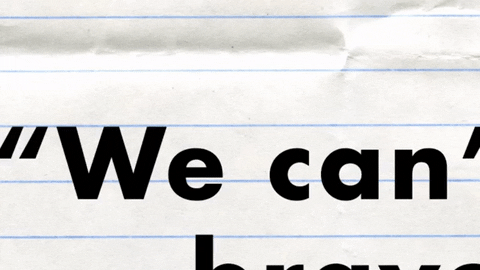While sports have the power to create barrier-breaking diversity, sports journalism has remained immune. According to a study by the Institute for Diversity and Ethics in Sport, 88.3 percent of sports reporters are men. The same study found also found that on average 90 percent of those men are white. In a field where diversity struggles to find its foothold, finding a woman on the sports desk is a rarity. Finding four is a miracle.
That’s why it was shocking when earlier this year The Washington Post announced that it would become the first major newspaper to have four major professional sports beats covered by women: Liz Clarke (Redskins), Candace Buckner (Wizards), Chelsea Janes (Nationals), and Isabelle Khurshudyan (Capitals). The diverse group of women, ranging in age and race, highlights that women from all backgrounds can talk and write shop in the world of sports.
Clarke has been a sports reporter for the last seventeen years and joined the Post in 1998 after working for The Dallas Morning News, USA Today, and the The Charlotte Observer. She stepped into sports journalism by accident after covering a piece on academic fraud in college basketball.
“I so enjoyed the bosses I had in sports, and the subject matter and the challenges, I stayed with it, and grew with it as well,” Clarke said.
Before taking over as beat reporter for the Redskins, she covered eight Olympics, college football, college basketball, two World Cups, tennis, and auto racing (in which she has twice been honored as Motorsports Writer of the Year).
While she may have entered sports reporting on accident, Clarke has not let sexist attitudes of others in the field affect her success as a reporter, “I’m not rattled by it. It may offend or annoy me, but ultimately I think comments like that say more about the person who is speaking, than what it says about me. I know my ability, I know my strengths, and I know my weaknesses. And I’ve never been one who feels like I have to fit in or periodically takes stock if I’m one of ten women in this room, etc.”
[quote position="left" is_quote="true"]There are so many good reporters, who happen to be women, covering major stories.[/quote]
Sports was always in Buckner’s blood, “I've always been a big sports fan. First, I thought I was going to be an athlete—but quickly realized I wasn't the next Jackie Joyner-Kersee. So to stay with my love of sports, I'd figured I'd do TV and be like Hannah Storm. But I grew out of that and realized I enjoyed expressing myself through the written word,” she said.
Buckner spent fifteen years as a sports reporter before joining the Post in 2016 and feels encouraged with the changes she sees taking place, “I'm finally starting to see a lot more women in visible beats. Whether it's writing for newspapers, web sites, et cetera, there are so many good reporters, who happen to be women, covering major stories.”
Buckner pointed to Katie Baker, a reporter from Ringer.com, who came to D.C. to write a feature on the Wizards, “This might have been the first time I've seen a female national feature writer swoop in for assignment like this. That was very encouraging but the thing is—she's good and, of course, she would be in a coveted position like that.”
“Honestly, it sort of chose me,” Janes said of becoming a sports reporter. As a softball player in college, Janes was friendly with other athletes, and one of the girls who lived on the same floor of her dorm was working on story about an athlete and was having trouble locking that person down for an interview, “I offered to help, then to write the article, since she was swamped with homework. I enjoyed it, and the whole thing sort of took off from there. Looking back, I loved writing and I loved sports, so it was pretty much a natural fit. Ultimately, I think I found the right path in the end.”
Janes began reporting in 2011, joining the Post in 2014, and since then she has the found her time in sports reporting to be encouraging, crediting the women who came before her, “I've been lucky enough to chat with people like Christine Brennan (of USA Today), Claire Smith (soon to be the first female in the Baseball Hall of Fame), Sally Jenkins (Post columinist and writer, magazine writer, and author) and others, all of whom had it far worse than I did when they started out. Because they conducted themselves so gracefully, more and more women got the opportunity to cover sports, and now, people hardly blink—at least in my experience.”
The youngest member of the team, Khurshudyan, interned with the Post in 2014, and joined as the Capitals beat writer shortly after graduating from the University of South Carolina.
As she told the Post, “I think it’s a little bit harder to be taken seriously sometimes. It’s always felt like I’ve had to work harder for credibility with the fan base of whatever team I’m covering. There’s even less room for error to say or write the wrong thing, because the perception is often that the mistake is as a result of me being a woman and not a normal human who occasionally makes mistakes. But that almost makes it more rewarding when you finally do establish yourself as that authoritative voice on your beat and no one’s really ‘mansplaining’ to you anymore.”
Editor-in-Chief Matt Vita said he never intentionally hired all women. “From my perspective, it’s always positive to have the best reporter in position to do their best work, and the beats to which their suited. And in this case, I was gender blind in a way, because in each of their cases they were the best reporters I had to cover those beats when they moved to them. It happened this way by chance, more than anything else.”
But he believes diversity strengthens the depth of stories told in sport, “They see stories differently than most male reporters, and that presents opportunities for a different perspective on a male professional sports team, and that’s just terrific. As a result, the readers are better served,” Vita said.
[quote position="full" is_quote="true"]A better goal is that women earn the same kind of consideration for jobs that men do, and are assessed the same way.[/quote]
The Washington Post has a history of inserting women’s voices in the mix of their sports department. The Post helped launch the career of ESPN’s Rachel Nichols, who covered the Capitals beat from 1996 to 2004; Christine Brennan, a syndicated sports columnist for USA Today, and an on-air commentator for ABC News, CNN, PBS NewsHour, and NPR, joined the Post in 1985, becoming the first woman to cover the Washington Redskins beat; and Sally Jenkins, who joined the Post for a second stint in 2000, and in 2005 became the first woman inducted into the National Sportscasters and Sportswriters Hall of Fame.
The goal should not be to even out the ratio of men vs. women in sports reporting, but instead to ensure that women are given equal opportunity to be considered as a reporter, according to Janes, “I think a better goal is that women earn the same kind of consideration for jobs that men do, and are assessed the same way—not necessarily considered more because they are a woman, but considered the same way. I think as long as that continues to happen—because I do believe that is the reality in a lot of places now, women have a strong future in journalism, and young girls will have plenty of role models to look at as they consider going into the field.”
While more women slowly enter the fray of sports reporting, other major sports publications are beginning to give the title of editor in chief to women, such as, Alison Overholt, who last year became editor in chief of ESPN Magazine, and Elena Bergeron, who took over as editor in chief at SBNation.com last month.
Like any other career, the importance of seeing someone who looks like you in that field can only serve as encouragement. However, Clarke hopes that women who choose the path of becoming a sports reporter do not let their gender discourage them from moving forward, “If this is the path you want to choose, don’t exploit being female as you go about your job, and don’t apologize for being female as you go about your job … but the career path for young person—male or female—is tough in this economy and you have to be tough and have to accept rejection and stick with it.”















 Visualization of a black holeImage via Canva
Visualization of a black holeImage via Canva

 Speaking in public is still one the most common fears among people.Photo credit: Canva
Speaking in public is still one the most common fears among people.Photo credit: Canva muhammad ali quote GIF by SoulPancake
muhammad ali quote GIF by SoulPancake

 Let us all bow before Gary, the Internet's most adventurous feline. Photo credit: James Eastham
Let us all bow before Gary, the Internet's most adventurous feline. Photo credit: James Eastham Gary the Cat enjoys some paddling. Photo credit: James Eastham
Gary the Cat enjoys some paddling. Photo credit: James Eastham James and Gary chat with Ryan Reed and Tony Photo credit: Ryan Reed
James and Gary chat with Ryan Reed and Tony Photo credit: Ryan Reed


 Rock deterioration has damaged some of the inscriptions, but they remain visible. Renan Rodrigues Chandu and Pedro Arcanjo José Feitosa, and the Casa Grande boys
Rock deterioration has damaged some of the inscriptions, but they remain visible. Renan Rodrigues Chandu and Pedro Arcanjo José Feitosa, and the Casa Grande boys The Serrote do Letreiro site continues to provide rich insights into ancient life.
The Serrote do Letreiro site continues to provide rich insights into ancient life.